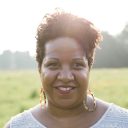What other ways of knowing can philanthropy embrace to imagine our future?
As we bear witness to the inhumanity of empire and grieve the reality of climate collapse, it is Black, Brown and Indigenous women and girls, and our trans, nonbinary, and two-spirit kin whose voices are guiding the path beyond violence.
This year, as Women’s History Month invites us to look back to the experiences and achievements of our elders and ancestors across generations and movements—from Civil Rights to Stonewall and the American Indian Movement, from anti-apartheid to girls’ rights to education—how can we bring their wisdom forward into our organisations, movements, and grantmaking? How can we bring their wisdom into our collective future?
Today, the culture of violence that impacts all of us is on full display around the world. And as it continues to reveal itself, more and more worldbuilders are coming forward. More and more people are ready to resist, uproot, and transform our culture.
Worldbuilding is the act of imagining—and bringing into being—a different world where all people live in dignity, and all beings can thrive. Worldbuilding is a practice and—as Mariame Kaba said about hope—a discipline.
Ten years ago, a group of leaders in the movement to end domestic and sexual violence came together with a knowing that our mainstream responses to violence were not enough to end it. Within an ecosystem of work aimed at ending violence against women and girls of color, Resonance Network’s founders knew that truly creating safety for those most impacted by interpersonal and institutional violence meant transforming the systems and culture themselves. It meant creating a world beyond violence. This is how worldbuilding became our practice and our discipline.
Resonance Network starts by building from the places white supremacy and other oppressions have not touched. Our worldbuilding draws on the courage, perseverance, and dreams of our ancestors. We access liberation through intergenerational wisdom, the wisdom of the natural world, beloved community…and radical imagination. Because, as U.S. poet and writer, Lucille Clifton once said, “we cannot create what we can’t imagine.”
It is worth pausing here to define radical imagination. We know that the systems of domination and extraction that shape our lives, also shape our experiences and beliefs about what is possible. When we say radical imagination, we mean imagination that is unconstrained by those systems and their violence. We mean the freedom to imagine the life and liberation we know is possible.
Around the world, what we now know as futurism began as storytelling in various cultures. It became a worldbuilding practice among people whose lives were shaped by violence, imagining themselves into a future beyond it. Author Ytasha L. Womack described Afrofuturism as “an intersection of imagination, technology, the future, and liberation” through a Black cultural lens. Indigenous futurism and Latinx futurism are likewise genres that are both rewriting histories and building futures beyond colonialism, where people whose lineages have borne the burden of its violence are thriving, and where the land is stewarded by its native inhabitants and cared for by all.
In the words of Afrofuturist author N.K. Jemisin, “Some worlds are built on a fault line of pain, held up by nightmares. Don’t lament when those worlds fall. Rage that they were built doomed in the first place.”
As we center the wisdom and lived experience of those most impacted by the violence of these worlds in our work, it is important to acknowledge—especially in philanthropy, which prizes certainty, data, and other tangible and trackable analytics—that there are multiple ways of knowing. Relationships in beloved community, ancestral wisdom, and the wisdom of the natural world will be part of our pathway to liberation. What could it look like for the culture of philanthropy to expand and embrace these ways of knowing? How could this expansion also begin to make healing possible for funders themselves?
More and better funding for women and girls—those most impacted by violence—is part of this expansion. According to the 2023 Women & Girls Index (WGI) from the Women’s Philanthropy Institute, women and girls’ nonprofits in the U.S. receive less than 2% of philanthropic support. Philanthropy provides even less support for women and girls of color, receiving only 0.5% of foundation funding according to a 2020 report by the Ms. Foundation for Women.
What could it look like for philanthropy to not only invest in women and girls, but in the foundations of collective healing, i.e. systems of collective governance and spaces for belonging, nurturing care, that offer the capacity and spaciousness for the radical imagination that worldbuilding asks of us?
Our movements have developed powerful ways to oppose and resolve violence. However, responding to oppressive systems is not enough. We can also build new ways of being together to uproot the causes of violence.
All parts of our lives—our communities, our livelihoods, our relationships, and our systems of governance—have been impacted by worldviews of control, domination, and extraction. All of us carry these impacts in our bodies and spirits. And we all play a role in creating, upholding, and transforming norms and culture.
Octavia Butler wrote, “…there’s no single answer that will solve all of our future problems. There’s no magic bullet. Instead there are thousands of answers–at least. You can be one of them if you choose to be.”
Together, we make a world beyond violence possible.
Alexis Flanagan is the Co-Executive Director of the Resonance Network.




Comments (0)
Great article it's really informative and creative which helps us to post new updates. it's really worth it. Thanks a lot.